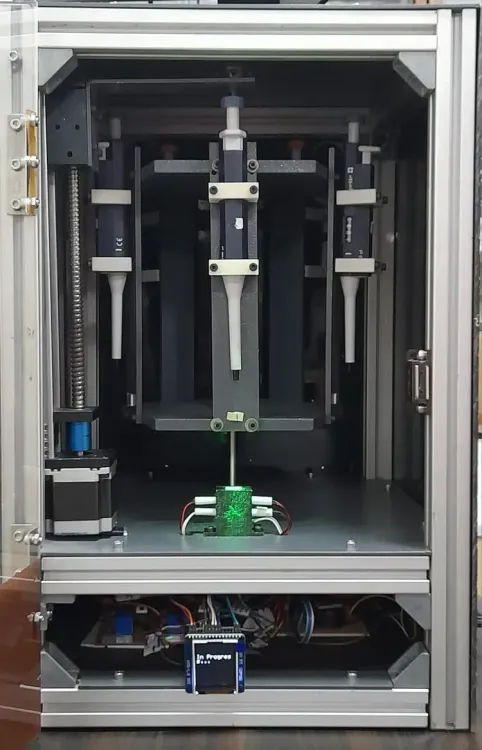How Are Indian Researchers Revolutionizing Pesticide Detection with a Smart Portable Device?

Synopsis
Key Takeaways
- Portable technology for pesticide detection has been developed.
- The device offers real-time results for monitoring pesticide residues.
- It enhances food safety and environmental health compliance.
- The technology utilizes gold nanoparticles for detection.
- Future expansions will include a wider range of pesticide detections.
New Delhi, Nov 17 (NationPress) A group of scientists from the Indian Institute of Technology (IIT) Madras in collaboration with Panjab University has engineered a portable automated optical device that can identify remarkably low levels of pesticide residues in water, food, and the environment, which can present serious threats to human and environmental health.
Traditional laboratory techniques for identifying such residues, especially the widely used organophosphate Malathion, are often costly, labor-intensive, and necessitate skilled professionals.
This innovative research, backed by the Department of Science and Technology under its ‘Technology Development and Transfer’ Programme, tackled this issue by creating a field-ready, user-friendly device that delivers real-time, ultra-sensitive detection of pesticides.
The newly developed ‘Smart MDD (Malathion Detection Device)’ is a colourimetric detection system utilizing gold nanoparticles (AuNPs) combined with an engineered aptamer molecule that specifically identifies Malathion.
The reaction results in a noticeable colour change—from red to blue—indicating the pesticide's presence, a shift that the device’s built-in optical system accurately assesses. This automated method removes the need for manual intervention, allowing for swift and reliable outcomes, the team reported. The research findings were published in the peer-reviewed journal Review of Scientific Instruments.
“This technology could significantly impact the real world. It enables farmers, food safety authorities, and environmental regulators to quickly assess pesticide contamination on-site—whether in irrigation water, produce, or soil—ensuring adherence to safety regulations and minimizing health risks,” said Prof. Sujatha Narayanan Unni, from the Department of Applied Mechanics and Biomedical Engineering, IIT Madras, in a statement to IANS.
“It also assists in monitoring pesticide runoff in aquatic systems, which is a major environmental issue,” Unni added.
The team achieved a detection limit of around 250 picomolar and a correlation with laboratory spectrophotometer results—standards rarely seen in portable devices.
Currently tested in laboratory conditions, the device is set to undergo validation with real-world samples, including fruits, vegetables, and field water sources.
“We aim to broaden the platform’s capabilities to detect a wider variety of pesticides, reinforcing its role in sustainable agricultural management and environmental monitoring,” stated Dr. Rohit Kumar Sharma from the Department of Chemistry and Centre for Advanced Studies in Chemistry, Panjab University, in a discussion with IANS.









